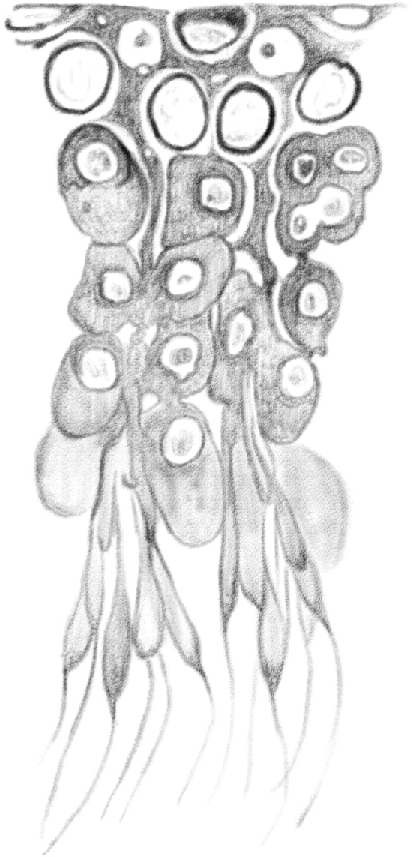Figure 14.

(Table IV.) Idem [(the same as above)], in which [spermatids] enter their third [(condensing)] stage of development. [Secondary spermatocytes and nascent round spermatids] originate from third stage [late pachytene spermatocytes]. First stage [zygotene spermatocytes] grow larger before entering the second stage [(early pachytene spermatocytes)]. It is possible to see [spermatogonia] in contact with the sheath, having the appearance of cells moving from the first [(type A spermatogonia)] to the second [(intermediate, or In spermatogonia)] stage. 480/1. (This represents a stage XIV–I tubule [Perey, Clermont, and Leblond Amer J Anat (1961)]. Germ cells included would be: rare type A spermatogonial stem cells, type A differentiating spermatogonia and intermediate spermatogonia, zygotene and pachytene spermatocytes, and round and condensing spermatids. Multiple transitions are taking place at this point in the epithelium.)
